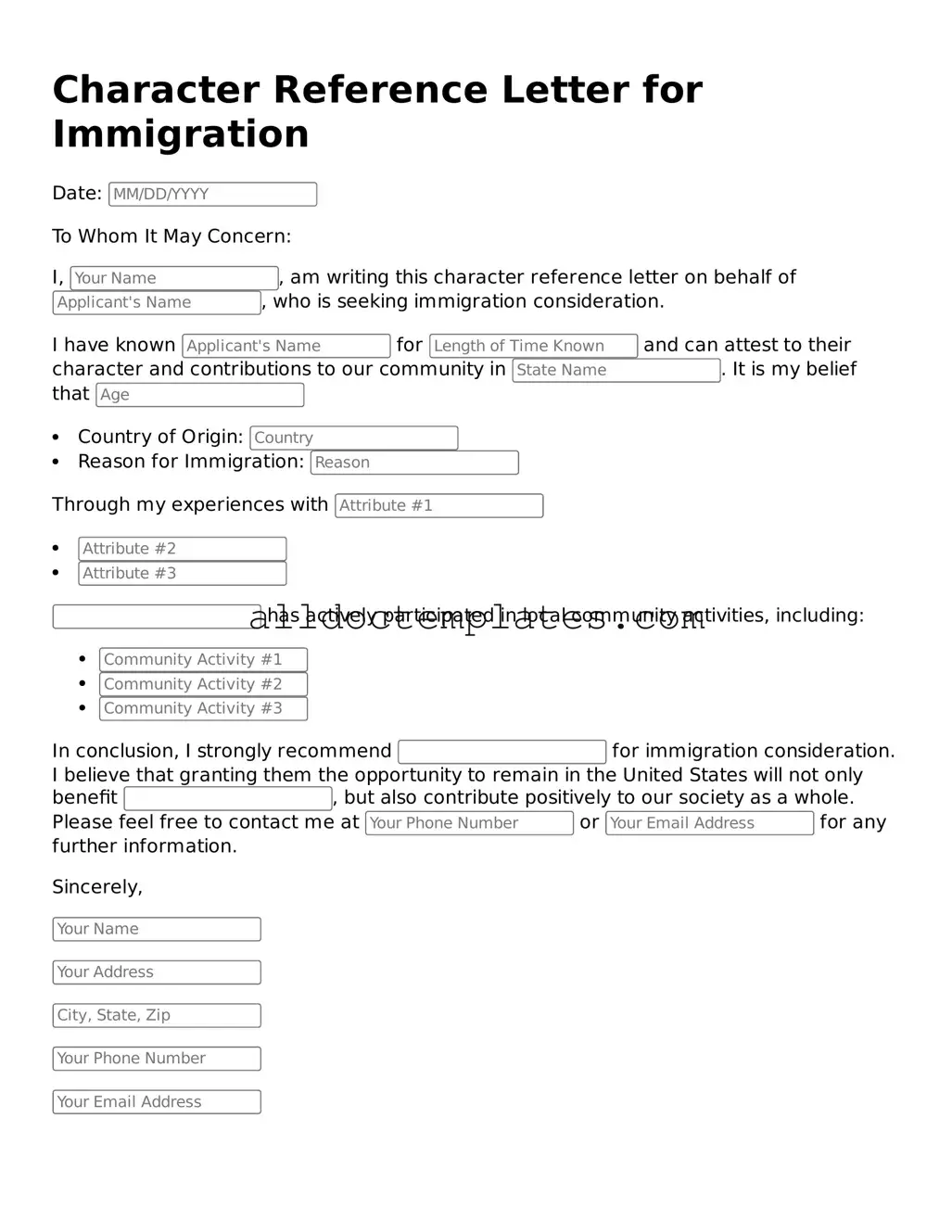Valid Character Reference Letter for Immigration Template
The Character Reference Letter for Immigration is a document that provides personal insights into an individual's character and conduct. This letter is often used to support immigration applications by offering a perspective from someone who knows the applicant well. It can play a crucial role in demonstrating the applicant's good moral character to immigration authorities.
Get Your Form Now
